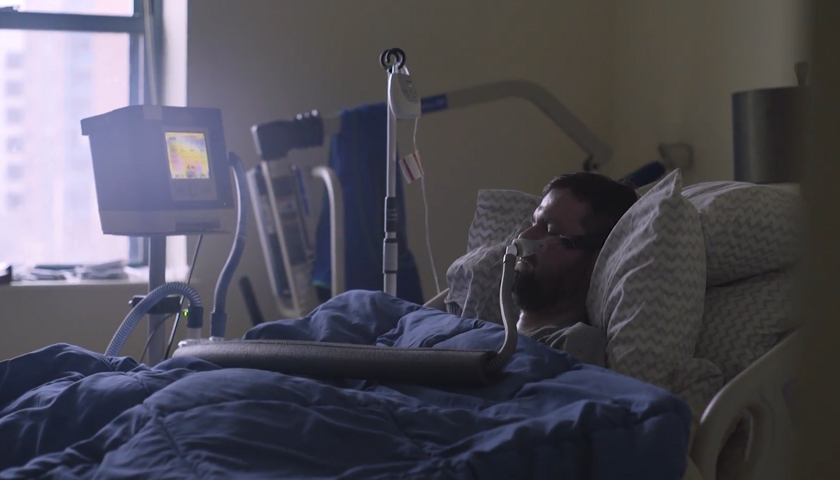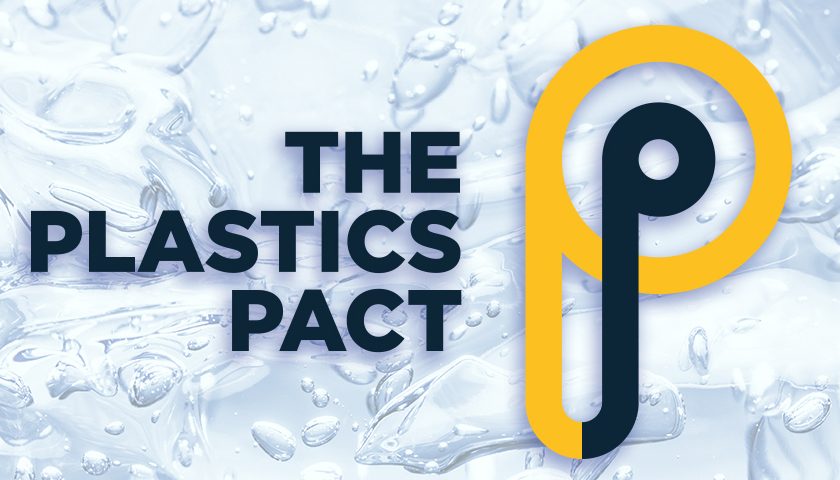We have featured a news story on this but I felt it was worth doing a bit more on. Project Revoice is a global not-for-profit initiative developed by BWM Dentsu creative agency, based in Sydney, Australia. Driven by the agency’s commitment to finding new creative solutions through technology, the team were inspired by revolutionary advances in voice and speech technology.
As part of the Project Revoice team at BWM Dentsu, Oskar Westerdal and René Schultzshare apassion for creative tech. New innovation in computational linguistics and machine learning,unearthed through their research, led the team to create Project Revoice; a solution for people who suffer from illnesses and diseases that result in the loss of speech.
Through the 2014 ALS Ice Bucket Challenge, the team had become aware that Amyotrophic Lateral Sclerosis(ALS – otherwise known as Motor Neuron Disease) frequently caused patients to lose their voices. Through the ALS Association, it came to light that Pat Quinn, the co-founder of the ALS Ice Bucket Challenge, had since lost his ability to speak.
Pat was diagnosed with ALS shortly after his 30thbirthday. He swiftly became involved with fundraising for research into the disease. Through the ALS Ice Bucket Challenge, he gave ALS a global voice, and the phenomenon raised over USD$115 million, which is now being used for gene discovery, disease model development, identification of biomarkers, clinical trials and drug development.
The Project Revoice team established that while Pat remains an advocate for ALS awareness, his body is fighting the severe effect of the illness. He is now confined to a wheelchair and in 2017 ALS finally robbed Pat of his voice. It was a clear decision, the BWM Dentsuteam wanted to give the man who gave his voice to ALS, his own voice back – andProject Revoice was born.
The team at BWM Dentsu knew that keyboard and eye-operated communication and control systemswere widely used to create computer generated voices through Augmentative Alternative Communication (AAC) speech devices. While these speech devices enable the person to communicate, they do so through a computer sounding voice.So they set out to establish which companies were leading the field in the digitization of voices.
This search led them to Lyrebird, a Canadian start-up, which had discovered how to process just two-to-three hours of a person’s speech into a usable and dynamic digital voice, with the real tone and sound of the person’s original voice.
However, the team were at a disadvantage. The normal process, was for the person to go into a sound recording studio to create a high-quality recording. This would not be possible for Pat, given that had already lost his ability to speak. Fortunately, Pat had done many interviews to promote the Ice Bucket Challenge, so the team started to collect hours of video footage of Pat speaking. They then worked with a sound editing studio to clean the recordings up and reduce them down to the clearest two hours speech possible.
The final piece of the puzzle was to connect Pat’s voice with his eye gazer device. Oskar and Renéset out to contact the leaders in Australian technology to see if theiridea could be brought to life – and they knew just who to speak to: Finch, who,in partnership with Lyrebird, made BWM Dentsu’s vision a reality.
Some months later, the combined efforts ofan Australian creative agency, a Canadian tech company and an Australian production houseresulted in the creation of Project Revoice – technology that literally enables people to speak in their own voice, long after they have lost the ability to talk.
In March 2018, Oscar and René took Project Revoice to Pat in New York and, in the comfort of his own home, surrounded by friends and family, the man who gave his voice to the ALS Ice Bucket Challenge was given his own, real voice back.
Pat Quinn’s first words, spoken using his eye-reader, in his own voice:
Well I hope you’re all ready for another speech!
It’s a strange feeling saying your first words a second time. I’ve always loved making speeches as you know, but this is certainly a whole new experience. It’s like you don’t even realise how powerful, how personal and just how unique your voice really is until it’s taken from you. Say something. Listen to it. No one else has your voice.
My voice was how I fought back against the very disease trying to take it from me. After my diagnosis, I began telling people my story, knowing that one day ALS would attempt to shut me up.
Sorry I’m not going out that easy. Because guess what – my voice is back!I will make sure my voice is heard until ALS stops robbing people of their own voices. This is what keeps me going, my voice is part of who I am.ALS has lost this round.Can you all hear that? It’s my voice!
Q&A with Pat Quinn
Patrick Quinn is thirty-four years old and was born and raised in Yonkers, New York. In March of 2013, a month after his 30th birthday, Pat was diagnosed with Amyotrophic Lateral Sclerosis (ALS – otherwise known as Motor Neurone Disease). Shortly afterwards, Pat committed to a mission of spreading awareness for this little-known disease. He became a strong advocate explaining to others that having no effective treatments or a cure is not acceptable.
In July of 2014, the biggest movement in ALS and fundraising history began: the ALS Ice Bucket Challenge. Pat was at the forefront of the ALS Ice Bucket Challenge where he connected networks to facilitate in popularising the Ice Bucket Challenge around the United States and around the world.
The ALS Ice Bucket Challenge raised over USD$115,000,000 globally. Pat went on to become a major advocate for ALS; speaking before Congress, at inspirational speaking engagements with companies like Google and Facebook, and guest speaking at schools,universities and colleges. Pat has received many accolades for his advocacy work including a nomination for TIME Magazine Person of the Year.
In 2017 ALS finally robbed Pat of his voice. In March 2018, Project Revoice returned it to him.
When were you first diagnosed? Tell us about your diagnosis. How did you initially feel/respond/react?
I was diagnosed with ALS back on March 8th2013. My first noticeable symptoms date back to August 2011. I was only 28, so the last thing I was thinking about was having a terminal illness. After almost two years, it was finally conclusive that I was diagnosed with the disease. I remember every second of that day. It’s not a day you forget. I was up in Baltimore at Johns Hopkins with my mother and girlfriend. Everything was pointing in the direction of ALS, but I still had this little hope that somehow, they would find something else. They did not. Immediately after hearing those three dreaded letters, I left the hospital by myself and sat on a bench. I was in a state of shock just staring at the sky.
This moment is so vivid in my head. I can recall every little detail. It was a blue sky, scattered clouds, cold breeze, and people were walking by every couple of seconds. But none of it mattered. My world just stopped for a bit. At the age of 30, I was diagnosed with ALS.
Talk us through your experience of the disease.
I remember the first time I noticed something wrong. It was the morning after I played in an all-day softball tournament. My left arm was twitching and it wouldn’t stop. I just assumed my arm was tired, but the twitching would never stop. It would start in my left arm, move to my right arm, and would eventually move to my legs. The twitching has never stopped. My weakness would start in my hands, beginning with my fingers. I wasn’t able to put my fingers together. They were slowly separating and I was unable to move them back together. This is when I knew something was wrong. My hands would weaken, then my arms, then my neck, and it worked its way to my legs. The last thing I noticed was my voice. The disease progressed over the past seven years, probably longer. Slowly but surely, ALS has destroyed my physical body.
How did you get involved with the ALS community?
After the initial shock of the diagnosis wore off, I made the decision to publicly fight, put myself out there, and hopefully make a difference. I decided to put a team together for the local ALS Walk. We named our team Quinn for the Win. Over 200 people would show up to support my fight. This is the first time I felt like I could really do something positive. The ALS community is made up of some of the best people I’ve ever met. Through social media like Facebook, I would connect with patients all over the world. I continue to connect with people today.
Tell us about your awareness/fundraising activities pre-Ice Bucket Challenge?
I believe creating awareness is the key to building support for ALS. Awareness leads to support and support leads to funding. Fundraising prior to the Ice Bucket Challenge was pretty traditional. We ran basketball tournaments, golf outings, concerts, and events at bars or restaurants. I’m so lucky to have the people around me that I do. My local community in Yonkers is incredible! Social media makes networking and connecting with other ALS patients easier than ever. Through Facebook, we were able to meet so many amazing fighters. We would document our journeyshowing everyone we could that we were living with ALS, not just dying from it.
Tell us about your role in the Ice Bucket Challenge, how did you feel as your saw it attract global attention? Did you ever imagine that the Ice Bucket Challenge would be such a global phenomenon?
The Ice Bucket Challenge was a crazy time! A worldwide movement like the Ice Bucket Challenge doesn’t just happen. Life will present you with opportunities. It’s up to us to make something happen. The Ice Bucket Challenge wasn’t originally for ALS. It was going around for a number of different causes until one golfer in Florida took the challenge for his cousin’s husband who had ALS.
It caught on in this patient’s town close to me and the power of social media brought it to my attention. I will never forget the day I saw a friend from grade school take the challenge and said he was doing it in my honor.
No one could have imagined what was about to happen. All of the local events, community outreach, speaking, networking, and everything else I did in that first year and a half following my diagnosis, it led me right to the ALS Ice Bucket Challenge. I was lucky enough to be in the right place and time to make the Ice Bucket Challenge grow. Being so active, I built a strong supportive network and connected with the right people to take it to new levels. I reached out to another young patient shortly after diagnosis, Pete Frates, and our friendship would be the key to the challenge. This New York to Boston bond would be the key to the growth of the ALS Ice Bucket Challenge. The support for ALS I was hoping to create was taking place right before my eyes. As it happened, my head was spinning. It was surreal. Hundreds of likes on every Facebook post. New videos were being uploaded every couple of seconds. I could never have imagined, not in my wildest dreams, that the Ice Bucket Challenge would become this global phenomenon. Every time I thought to myself, this can’t get any bigger, the next day would somehow get bigger.
The power of this positive movement was life changing. The Ice Bucket Challenge would take me all over the world. I did what I set out to do in creating unparalleled awareness leading to research that will one day make ALS treatable and God willing cured.
What will this [Project Revoice] technological advancement mean to you?
This technological advancement means everything to how I communicate. I will no longer avoid getting involved in conversations. I won’t have people come stand behind me to read what I type. This is what I would do instead of using the computerized voice already on the eye gaze. This technology gives me back a piece of myself that was missing. ALS takes and takes and takes. This time I will take something back!
What do you hope this technology will mean for new ALS/MND patients around the world?
This technology will change the way newly diagnosed patients fight back. This takes voice banking to a whole new level. When I was diagnosed, I had the option of recording everything, literally everything I say, or use the generic voice already on the eye gaze computer. I didn’t want to waste the time while I could still be active. After hearing my voice through this new technology, I was blown away! For patients to know they can have their own voice after ALS takes it away, it will change the way people live with ALS. It’s amazing!
Links



